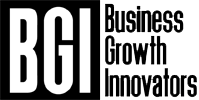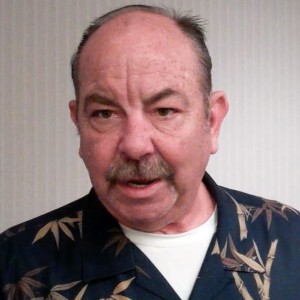Curt Owen of South Coast Funeral Services on what makes them different…
Curt Owen of South Coast Funeral Services on what makes them different…
Kathy DiPeri
575 Anton Boulevard, Suite 300
Costa Mesa, CA 92626
714-432-6510
kdeperi@SouthCoastFunerals.com
www.SouthCoastFunerals.com
Curt Owen: As she said my name is Curt Owen. I work for South Coast Family Funeral Services with Kathy. I have known Kathy for over 15 years, and I have worked with her over 15 years. We worked for a corporate funeral home for my whole career. And it got to the point where we weren’t able to adjust to their rules and their dictates, and so we decided to head out on our own. I always said that my last job or the place I worked at was very stressful. What Kathy and I are doing is even more stressful, but it’s a different type of stress. It’s very fulfilling for both of us. We are really excited.
A mortician or people who handle the dead is probably one of the oldest professions in the world right along with bread making and probably prostitution. It just comes down to somebody has to handle the remains once the body is no longer breathing. And so it takes a certain sort of person to do that.
I am a licensed embalmer and funeral director in the State of California. To become an embalmer, you need to go to school. The rules have changed since I went to school. I started in ’92. And at that point, it required one year of instruction, and then you had to embalm 50 bodies a year or the first 25 bodies under the direction of a licensed embalmer, and then you had to do 100 bodies per year for 2 years to able to get you embalmer’s license. Then you also had to take a written test in the State of California to become a funeral director. Then the board rules have also changed since I got my license. You need to have an AA degree, and there is a written test, and then you are issued funeral director license.
I want to talk just the minute about the embalming process while everybody’s eating. There might be some interest in that. Embalming is basically the temporary disinfection and preservation of the body. And my best analogy for embalming is embalming is to the body as cooking is to an egg. Our body is made up of millions of little cells that are all individual. The embalming chemicals make all those cells group together. So when you cook an egg, you crack an egg and it’s runny, but you cook it and it’s firm. Embalming is basically the same sort of process to the body. You begin an embalming process, you bring up an artery, it’s right above, then you make like a little one and half inch cut above the collar bone. You dissect the tissue that’s under there, and then you bring up artery, and you bring up a vein. There is a cannula that’s hooked to a machine. The machine basically is like a replacement to the heart. So the formaldehyde, and glutaraldehyde, and whatever the chemicals you’re using go into that artery, they go to your heart. The heart distributes it through all your arteries and ends up with the veins, and then it comes out the vein, and then that fluid basically pushes the fluids – that’s lymph fluids and blood – out of the body. And then the glutaraldehyde does that process where it links everything together, which stops decomposition, which is one of the main things that you’re trying to do with embalming.
The business is changed an awful lot since I started. When I started in ’92, there wasn’t a computer in the office. All of our printing was outsourced. I’d never seen a fax machine before, and now Kathy and I, we would live on our computers all day long. It’s not only a means of how we’re advertising, but the electronic death registration system in the State of California is online and that’s how we get a death certificate signed by a doctor and then we file that with the country who issues us a permit, and then the State will issue us a death certificate. So we spend a lot of time on the computer now.
And one of the things that we’re doing is we’re trying to bring that into the business more so that people don’t have to come to the funeral home. There’s a lot of people who don’t want to go to a funeral home. They’re either bad experiences in the past or they just don’t want to be there. And so if we can handle everything online, over the phone, or like in the old days, we used to use a fax machine but now everybody’s usually online so we can do that. and so we’re trying to bring that into our business, not only to help us but to help the families that we serve, so that in their time of need, their time of grief, they can stay home. We can go to their home, we can go to the hospital, we can go to the nursing home, anything, so that if they don’t want to come to the office, that they’re able to handle everything electronically or online.
The vision that Kathy and I have for our funeral home is to treat the families that we serve with respect, honor, and honesty. While we realize that this is also a business, we’re in a business, and unfortunately we’re having to deal with people who are in a bad point in their life. We’re here to make money or we’re there to make money, and we’re trying to treat families with a little more respect than what we had encountered in our previous positions. For us, as I said, this is a business, we’re here to make money, but it’s a calling for Kathy and I to be able to do this, to be able to assist people in their time of need and create enduring relationships with them. We’re hoping that people come back to us. We found that in our last position that a lot of the families that we’ve met became repeat families. These were people who came back to us time and time again. They would call and they would ask for us, because they’ve had this experience with us before that was good, that wasn’t bad.
So we’re trying to do this different model where we don’t have… We have basically what’s called a storefront. We don’t have a place where we store bodies. We don’t have a place where we can have a visitation or a service in our building, but we’re able to use churches. We’re looking to do in-home visitations where, for instance, the casket would be taken to the home and they would have their visitation in the house. We’ve got to make sure that the doors and the windows are all big enough so that you can get the casket in and out. And so we are looking towards doing that, and we are just really, really excited about this. We really are, and we are cheap. We’ll have to look at our prices here in another six months or so and see if we are too cheap.
We are not the most expensive funeral home in the area, and we are certainly not the cheapest funeral home in the area. We’re well aware that you can be cremated for under $600 in Orange County. We’re well aware that you can be cremated for over $3,600 in Orange County. At this point here with $795, and that’s $795 out the door. We think that’s fair.
Female: Out the door.
Curt Owen: Out the door. [laughter] And so…
Male: Dead or alive.
Female: Dead or alive. [Laughter]
Curt Owen: Whatever it takes. Whatever it takes. So I guess we will open it up. Did anybody have questions? Yes, sir?
Female: Any questions?
Male: People getting cremated, do they get embalmed?
Curt Owen: No. If you were going to have say a visitation or service with the body present and then the cremation followed the service, then normally, yes, you would be embalmed and then cremated. There is no law that says that you have to be embalmed in the State of California. Yes, ma’am?
Female: Can you pick your caskets, or urns, or any of that stuff?
Curt Owen: We have quite a selection of caskets and urns. Obviously we don’t have a showroom. A showroom, in the old days like 20 years ago, we used to have a room, and you would have anywhere from 20 to 30 caskets in the room, and they found that it depressed people. It depressed the heck out of people. You’re going to this room and see all these empty caskets. And so they’ve moved to the point now where we use a catalog. We have our caskets on our computers, so that we can show them to people. We can take computer out and show them, or we can send people a picture. Yes, ma’am?
Female: You also can arrange the headstone?
Curt Owen: We do grave monuments, yes, either a flat one or an upright. We can do those, and we are very competitive of our pricing on those.
Female: One more question, and I think we’re going to run out of time.
Male: So, Shawn, are you going to ask him about if you’re too long to fit into a casket? Are you going to ask that?
Curt Owen: They have longer caskets, not bigger caskets.
Female: What are you looking for for tips? What are [inaudible 00:11:00]?
Curt Owen: Okay, we’re trying nursing home, hospices, nurse supervisors at hospitals, any of those people who are at end of life or are involved in the end of life procedure with families. Those are the people that we are reaching out to. So if anybody knows those people, we are certainly willing to talk to them.
Audience: Thank you.

